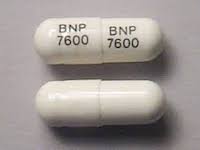
The change comes as a result of a number of studies and publications into the matter as well as direct petitioning of the Food and Drug Administration by patients who claim that having taken Elmiron over time, they’ve experienced difficulty reading, an inability to adjust quickly to low-light environments, and an overall blurriness to their vision.
Interstitial cystitis is an extraordinarily painful type of bladder disease. The condition causes intense bladder and pelvic pain while simultaneously causing frequent urination. Unfortunately, Elmiron has served as the sole treatment for the disease since its approval by the FDA in 1996, and patients are now wondering if the drug’s side effects may be worse than the disease it was meant to treat.
Additional research into the matter has been called for, however, litigation is already on the horizon with at least one suit filed by an Illinois woman who is seeking not only compensatory damages but also a declaration that Elmiron is a defective medication and is unsafe for use in humans.
The new language on Elmiron’s label specifically calls out the risk of eye disease and directs prescribing professionals to obtain a complete and detailed ophthalmologic history of any patient taking a course of the drug. It also calls for ongoing monitoring of the patient’s ocular condition while on the medication. Patients currently taking Elmiron should contact their medical provider to discuss the drug’s risk to their vision and ocular health.
